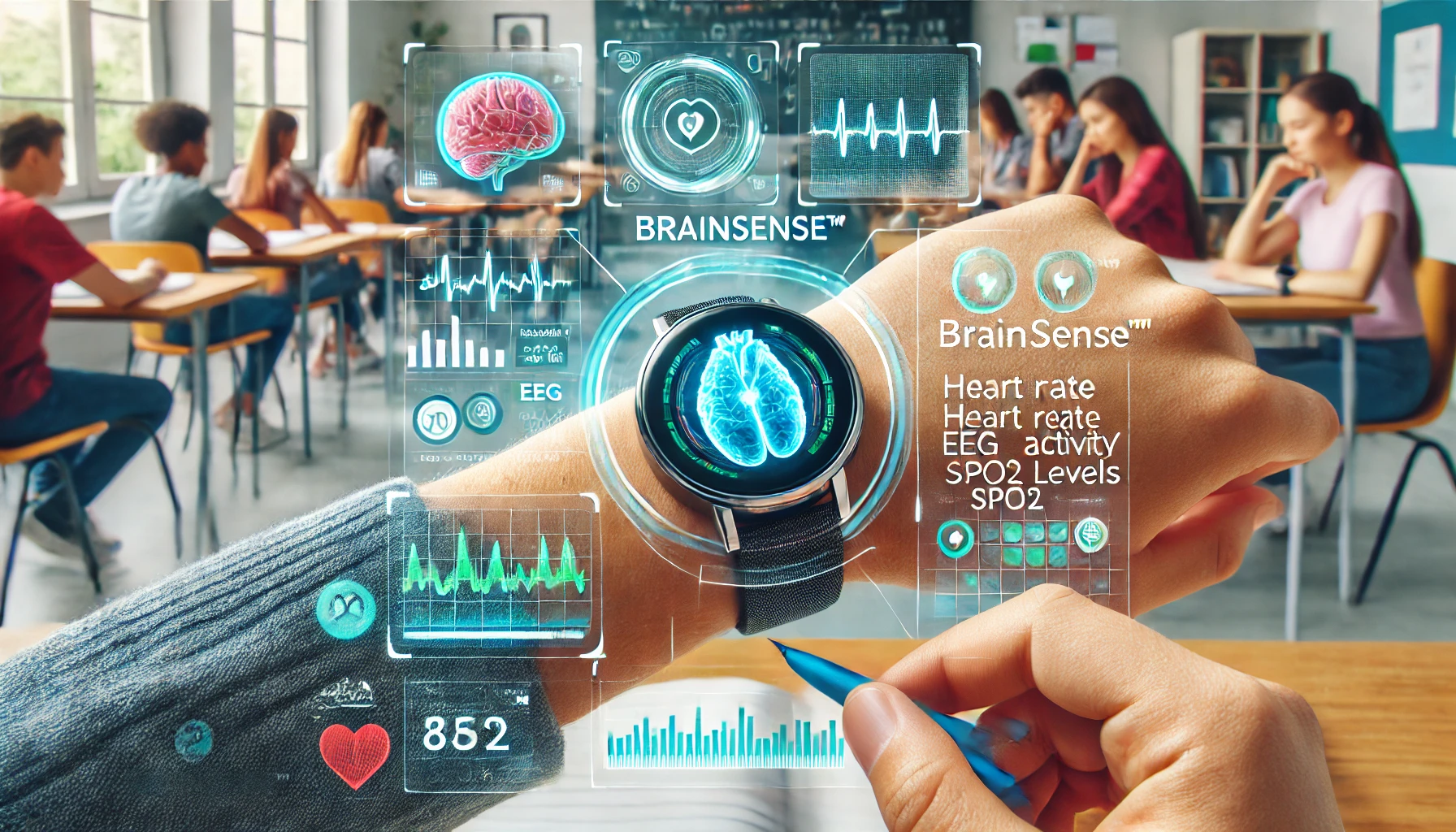Education is evolving with the integration of AI, offering exciting opportunities and challenges. To ensure successful implementation, it is crucial to seek expert advice on how to effectively navigate the use of AI in education. From enhancing personalized learning experiences to raising concerns about data privacy, understanding the benefits and risks of AI in education is necessary for educators, students, and policymakers. Learn how to harness the power of AI in education responsibly and maximize its potential impact.
Understanding the Basics of AI in Education
Defining Artificial Intelligence and Its Applications in Learning
The use of Artificial Intelligence (AI) in education refers to the incorporation of technologies that can mimic human intelligence processes such as learning, reasoning, problem-solving, and decision making. AI has revolutionized the education sector by offering personalized and adaptive learning experiences to students. This technology can analyze vast amounts of data to identify patterns in student learning, providing insights that can improve teaching methods and student outcomes.
The Role of Machine Learning in Personalized Education
If you are wondering about the specifics of AI implementation in education, it’s crucial to understand the role of Machine Learning (ML). ML is a subset of AI that enables systems to learn and improve from experience without being explicitly programmed. In personalized education, ML algorithms can analyze student performance data and behavior to create individualized learning paths tailored to each student’s needs. This approach helps educators provide targeted support and interventions to enhance student learning and success.
Machine Learning algorithms can identify areas where students may be struggling and recommend specific resources or activities to address those challenges. By continuously analyzing data and adapting to student needs, AI-powered systems can help optimize learning outcomes and increase student engagement in the educational process.
How to Identify the Right AI Tools for Your Classroom
Assuming you have decided to incorporate AI technology into your classroom, the next important step is to choose the right AI tools that will best suit your educational needs. With the myriad of options available in the market, it can be overwhelming to make the right decision.
Tips for Evaluating AI-Powered Educational Software
Any educator looking to integrate AI-powered educational software into their classroom should consider a few key factors before making a selection. It’s necessary to evaluate the software based on its effectiveness, ease of use, and compatibility with existing systems. Furthermore, take into account the support, training, and data security measures provided by the software company.
- Effectiveness: Ensure that the AI software aligns with your educational goals and enhances student learning outcomes.
- Ease of use: Look for user-friendly interfaces that can be easily integrated into your teaching practices.
- Compatibility: Check if the software can seamlessly work with your existing classroom technology.
Though the selection process may seem daunting, evaluating these key points can help you make an informed decision.
Factors to Consider When Selecting AI-Driven Learning Platforms
AIPowered educators must carefully consider various factors when choosing AI-driven learning platforms for their classrooms. It’s crucial to look at the adaptive learning capabilities, data privacy policies, and customization options offered by the platform. Additionally, assess the scalability, cost-effectiveness, and level of engagement the platform provides to students.
- Adaptive learning capabilities: Ensure that the platform can adjust to individual student needs and provide personalized learning experiences.
- Data privacy policies: Verify that the platform complies with data protection regulations and safeguards student information.
- Customization options: Look for platforms that allow you to tailor the content and learning paths according to your classroom requirements.
With so many options available, recognizing these critical factors can help educators make a well-informed choice.
Effective Strategies for Implementing AI in Education
How to Develop a Phased Approach to AI Adoption
Strategies: You can effectively implement AI in education by developing a phased approach to adoption. Begin by conducting a thorough assessment of your current educational system, understanding the areas that could benefit from AI integration. Next, identify specific goals and objectives for implementing AI, whether it be improving student engagement, personalizing learning experiences, or enhancing educational outcomes.
Approach: Take a structured approach by starting with pilot programs in select classrooms or subjects before scaling up to full implementation. This phased approach allows for testing, gathering feedback, and making necessary adjustments to ensure a smooth transition. By gradually integrating AI into various aspects of education, you can enhance the overall effectiveness of teaching and learning.
Best Practices for Integrating AI into Existing Curricula
On: Implementing AI in existing curricula requires careful planning and consideration of how to seamlessly integrate this technology into the learning environment. Best practices include providing adequate training and professional development for educators to effectively utilize AI tools in their teaching practices.
The Benefits of AI-Driven Adaptive Learning
Despite initial concerns about the integration of AI in education, there are numerous benefits to using AI-driven adaptive learning tools in the classroom. These tools can cater to each student’s individual learning pace and style, providing personalized learning experiences that can greatly enhance student outcomes.
How AI Can Help Bridge the Achievement Gap
Some of the most significant advantages of AI-driven adaptive learning are seen in how it can help bridge the achievement gap among students. By offering personalized learning experiences, adaptive learning technologies can provide additional support to struggling students while also challenging high-achieving students. This individualized approach ensures that each student receives the attention and resources they need to succeed, ultimately closing the achievement gap.
The Impact of AI on Student Engagement and Motivation
Some studies have shown that AI-driven adaptive learning tools can have a significant impact on student engagement and motivation. By providing personalized feedback and interactive learning experiences, AI tools can keep students engaged and motivated to learn. This personalized approach can help cultivate a positive attitude towards learning and boost student achievement.
Navigating the Ethical Considerations of AI in Education
The Importance of Transparency in AI Decision-Making
Not having transparency in AI decision-making processes can lead to mistrust and skepticism from educators, students, and parents. Without understanding how AI algorithms are making decisions, it becomes challenging to ensure that these decisions are fair and unbiased. It is crucial for educational institutions to provide clear and accessible explanations of how AI is being used to guide decisions in the learning environment.
Addressing Bias and Fairness in AI-Driven Educational Systems
Assuming that AI systems are neutral can be a dangerous misconception. AI algorithms are only as unbiased as the data they are trained on, which can often reflect historical biases and inequalities. Educational stakeholders must actively work to identify and mitigate biases in AI-driven systems to ensure fair outcomes for all students. This may involve regularly auditing algorithms, diversifying datasets, and involving diverse teams in the development and testing of AI systems.
Importance: It is critical to address bias and fairness in AI-driven educational systems to prevent discrimination and ensure equal opportunities for all students. Failure to do so can perpetuate existing inequalities and create barriers to learning for marginalized groups.
How to Prepare Teachers for an AI-Infused Classroom
Strategies for Building Teacher Confidence in AI Technologies
Technologies play a vital role in the modern classroom, and it is crucial for teachers to feel confident in using AI to enhance their teaching practices. To build teacher confidence in AI technologies, schools can provide comprehensive training programs that cover the basics of AI, its applications in education, and hands-on experience with AI-powered tools. Additionally, creating a supportive environment where teachers can experiment with AI technologies without fear of judgment can help them become more comfortable integrating AI into their lessons.
Providing Ongoing Support for Teachers in an AI-Rich Environment
Providing ongoing support for teachers in an AI-rich environment is crucial for their professional development. Schools can offer regular workshops, seminars, and peer-to-peer learning opportunities to help teachers stay up-to-date with the latest AI trends and tools. By fostering a culture of collaboration and continuous learning, educators can feel more empowered to leverage AI technologies effectively in their teaching practices.
Building a network of AI experts within the school community can also provide teachers with a valuable resource for troubleshooting issues, sharing best practices, and seeking guidance on implementing AI solutions in the classroom.
The Role of AI in Enhancing Student Assessment and Feedback
How AI Can Improve the Accuracy and Efficiency of Grading
Now, let’s discuss how AI is revolutionizing student assessment and feedback in education. One significant way AI is making an impact is through grading. Automated grading systems powered by AI algorithms can efficiently evaluate and score assignments, quizzes, and tests. This not only saves teachers time but also ensures more consistent and accurate grading.
Using AI to Provide Personalized Feedback and Guidance
Feedback: AI tools can also provide personalized feedback to students based on their performance. By analyzing the student’s submissions, AI algorithms can identify areas where the student is excelling and where they need improvement. This tailored feedback helps students understand their strengths and weaknesses, allowing them to focus their efforts on areas that need more attention.
Some AI systems can even offer guidance on how to improve, suggesting specific resources or additional practice exercises to help the student master the concepts. This personalized approach to feedback can be invaluable in helping students achieve their academic goals.
Plus
AI-driven feedback is not only beneficial for students but also for teachers. By automating the feedback process, educators can devote more time to designing engaging lessons and providing one-on-one support to students. This shift can lead to a more productive and fulfilling teaching experience.
Factors to Consider When Evaluating the Effectiveness of AI in Education
Unlike traditional teaching methods, AI in education presents a new set of challenges when it comes to evaluating its effectiveness. As educators and institutions start integrating AI-driven technologies into their curriculum, it is crucial to consider certain factors to ensure the success of these implementations.
- Alignment with learning objectives: It is necessary to evaluate how well the AI tools align with the educational goals and outcomes set by the institution.
- Data accuracy and relevance: Ensuring that the data used by the AI systems is accurate and relevant to the specific educational context is crucial for measuring their effectiveness.
- Ethical considerations: Ethical implications of using AI in education, such as data privacy and bias, must be carefully evaluated to prevent any negative consequences.
Any evaluation of AI in education should take into account these factors to determine its impact on student learning outcomes and overall educational experience.
How to Develop Meaningful Metrics for AI-Driven Educational Outcomes
Some key considerations when developing metrics for evaluating AI-driven educational outcomes include identifying specific educational goals that the AI tools are intended to support and defining quantifiable measures to assess their impact. By establishing clear metrics tied to student performance and engagement, educators can better gauge the effectiveness of AI technologies in enhancing the learning experience.
The Importance of Continuous Monitoring and Evaluation
Outcomes
A key aspect of evaluating the effectiveness of AI in education is the need for continuous monitoring and evaluation of its impact on teaching and learning. Regular assessment of how AI tools are being utilized in the classroom and their influence on student outcomes is necessary for making informed decisions about their integration into the curriculum.
A proactive approach to monitoring and evaluating AI in education can help educators identify areas of improvement and make adjustments to ensure that these technologies are enhancing the learning process effectively.
How to Foster Collaboration Between Humans and AI in Education
Strategies for Encouraging Human-AI Collaboration in the Classroom
Unlike the fear that AI will replace human teachers, the reality is that AI can complement and enhance the work that educators do. Humans are vital for providing the emotional intelligence, creativity, and critical thinking skills that AI currently lacks. To foster collaboration between humans and AI in education, it is important to design learning experiences that leverage the strengths of both. Educators can encourage students to work alongside AI tools, leveraging machine learning algorithms to provide personalized feedback and support in real-time.
The Benefits of Hybrid Intelligence in Educational Settings
You may wonder what benefits can be gained from combining human and AI intelligence in educational settings. Hybrid intelligence can lead to more personalized learning experiences, improved student outcomes, and better utilization of teachers’ time. By leveraging AI to handle routine tasks like grading assignments or providing immediate feedback, educators can focus more on mentoring students, fostering critical thinking skills, and creating engaging learning experiences.
Encouraging collaboration between humans and AI in the classroom can revolutionize the way we approach education, offering a blend of human creativity and AI efficiency that can benefit both students and teachers.

The Future of AI in Education: Trends and Predictions
Emerging AI Technologies with Potential for Educational Impact
For educators looking to harness the power of AI in the classroom, staying abreast of emerging technologies is crucial. Machine learning algorithms, natural language processing, and predictive analytics are some of the key AI technologies reshaping the education landscape. These tools can help personalize learning experiences, automate administrative tasks, and provide valuable insights into student performance and behavior. By incorporating these technologies into their teaching practices, educators can optimize the learning process and better support their students’ academic growth.
How to Stay Ahead of the Curve in AI-Driven Education
Predicting the future of AI in education involves understanding the fast-paced nature of technological advancements. Staying ahead of the curve requires continuous learning and professional development to effectively integrate AI tools into teaching practices. Educators need to be proactive in seeking opportunities to upskill and adapt to the evolving educational landscape driven by AI. By prioritizing training and collaboration with AI experts, teachers can ensure they are well-equipped to leverage the full potential of AI in education.
Predictions: As AI continues to revolutionize the education sector, we can expect to see an increased focus on personalized learning experiences, adaptive learning platforms, and AI-powered assessment tools. Educators will need to navigate ethical considerations and data privacy concerns to ensure that AI technologies are used responsibly and equitably in educational settings. By embracing innovation and fostering a culture of continuous improvement, educators can harness the transformative power of AI to enhance student outcomes and drive educational excellence.
Addressing the Challenges and Limitations of AI in Education
Overcoming Technical and Infrastructure Barriers to AI Adoption
One of the primary challenges in implementing AI in education is the technical and infrastructure barriers that many educational institutions face. These barriers include outdated systems, lack of interoperability between different technologies, and limited technical expertise among educators. To address these challenges, institutions need to invest in updating their infrastructure, providing training for educators on how to use AI tools effectively, and ensuring that systems are compatible with various AI applications.
Strategies for Mitigating the Risks of AI-Driven Education
Barriers to the successful implementation of AI in education include concerns about data privacy, algorithm bias, and the potential for over-reliance on technology. To mitigate these risks, institutions should prioritize data security and privacy measures, regularly audit algorithms for bias, and encourage a balanced approach that combines AI tools with traditional teaching methods. It is crucial to establish clear guidelines and policies around the ethical use of AI in education to ensure that students’ well-being and learning outcomes are protected.
Mitigating the risks of AI-driven education requires a multi-faceted approach that involves collaboration between educators, technologists, policymakers, and other stakeholders. By proactively addressing these risks and limitations, we can harness the potential of AI to enhance teaching and learning experiences in a responsible and effective manner.
How to Engage Parents and the Broader Community in AI-Driven Education
Strategies for Communicating the Value of AI in Education
For parents and the broader community to understand and support the integration of AI in education, it is crucial to effectively communicate the value it brings to student learning. There’s a need to highlight how AI can personalize learning experiences, provide real-time feedback to students and teachers, and offer opportunities for skill development in line with future workforce needs.
By organizing workshops, seminars, and informational sessions, educators can showcase the positive impact of AI on student outcomes and engage parents and the community in discussions about the role of technology in education. There’s a growing emphasis on fostering digital literacy among all stakeholders to ensure that they are well-informed about the benefits of AI-driven educational systems.
Building Trust and Transparency in AI-Driven Educational Systems
Even as AI technologies become more prevalent in educational settings, building trust and transparency in how these systems are used is necessary. It’s important to involve parents and the community in discussions about data privacy, ethical considerations, and the implications of AI algorithms on student learning outcomes.
This requires open communication channels, clear policies, and ongoing engagement to address concerns and misconceptions about AI in education. This collaborative approach can help build confidence in the responsible use of AI technologies and create a supportive environment for their integration into teaching and learning practices.
The Role of AI in Supporting Students with Special Needs
How AI Can Help Personalize Learning for Students with Disabilities
Many educators are turning to artificial intelligence (AI) to support students with disabilities in the classroom. AI tools can help personalize learning experiences by adapting the content and delivery methods to cater to the specific needs of each student. For example, AI-powered programs can analyze data on a student’s progress, preferences, and challenges to create customized learning plans that align with their individual learning styles and abilities.
The Potential of AI to Enhance Accessibility and Inclusion
With the rise of AI technology, there is a growing potential to enhance accessibility and inclusion for students with disabilities. AI can assist in providing real-time captioning and transcription services for students who are deaf or hard of hearing, making educational content more accessible. Additionally, AI tools can help teachers create materials that are more inclusive by providing alternative formats, such as audio descriptions for students with visual impairments.
Enhance the classroom experience for students with disabilities by leveraging AI technology can lead to greater participation, engagement, and academic success for these students.
To wrap up
With this in mind, it is crucial for educators to seek expert advice when incorporating AI technology into their classrooms. By consulting with professionals who have experience in this field, educators can ensure that they are using AI in a way that benefits their students without compromising their privacy or security. Additionally, experts can provide valuable insights into best practices for integrating AI tools into the curriculum in a way that enhances learning outcomes and promotes student success.
Ultimately, with the right guidance and support, educators can successfully navigate the use of AI in education and harness its potential to revolutionize the learning experience for students. By staying informed, taking advantage of training opportunities, and seeking out expert advice, educators can ensure that they are using AI technology in a responsible and effective manner that maximizes its benefits for their students.
FAQ
Q: What is AI in Education?
A: AI in education refers to the use of artificial intelligence technologies to enhance the learning experience, streamline administrative tasks, and personalize education for students.
Q: How is AI currently being used in education?
A: AI is being used in education for activities such as personalized learning, automated grading, virtual tutors, and data analysis to improve teaching methods.
Q: What are the benefits of using AI in education?
A: Some benefits of using AI in education include increased personalized learning opportunities, more efficient administrative tasks, improved student engagement, and the ability to analyze data to enhance teaching strategies.
Q: Are there any challenges associated with the use of AI in education?
A: Yes, some challenges include concerns about data privacy, the need for teacher training to integrate AI tools effectively, the potential for widening the digital divide, and ethical considerations in using AI to make decisions about students.
Q: How can educators navigate the use of AI in education?
A: Educators can navigate the use of AI in education by staying informed about AI developments, participating in professional development opportunities, collaborating with colleagues to share best practices, and considering the ethical implications of AI use in their classrooms.
Q: What are some ethical considerations when using AI in education?
A: Ethical considerations when using AI in education include ensuring data privacy and security, addressing biases in AI algorithms, providing transparency about how AI is used in educational settings, and considering the impact of AI on student-teacher relationships.
Q: How can students benefit from AI in education?
A: Students can benefit from AI in education through personalized learning experiences, receiving immediate feedback on their work, accessing resources tailored to their learning needs, and developing important digital literacy skills for the future.




